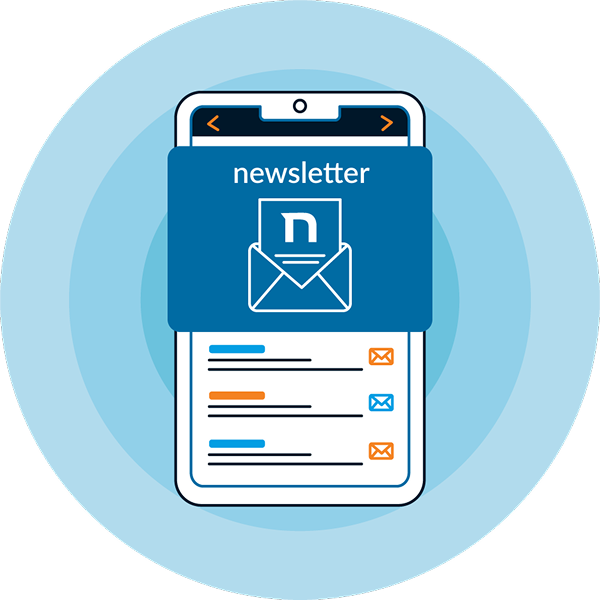The management of employment contracts is one of those activities that, even with the wave of digitization, has changed little in recent years. It is still very dependent on physical files, hard-to-change standard documents and face-to-face meetings.
However, with advances in technology, these practices ended up becoming unnecessary bureaucracies, which reduce the time that your Human Resources (HR) team has to dedicate to another vital activity for the company: locating and retaining talent.
To find good professionals, qualified and aligned with the company’s culture, keep them engaged with the rest of the team and motivated to perform their duties, HR needs to pay constant attention not only to changes in the job market, but also to the subtle and contextual perceptions and aspirations of each employee.
Carrying out this function becomes more complicated when formalizing and managing employment contracts causes pain such as delay in hiring and difficulty in managing documents. Compounding this scenario, the more the company grows, the more these challenges intensify.
In this text you will understand the main obstacles in managing employment contracts and you will learn how to optimize the performance of your HR team with the help of good CLM software, such as netLex.
Main pains in the management of employment contracts
A hiring process becomes slow for reasons such as:
- Difficulty in locating the most up-to-date draft of the contract and non-disclosure agreement;
- Doubts about the possibility of including a condition negotiated with the candidate;
- Complexity in the signature phase, since it is necessary to print physical copies and send them to each person responsible for the document;
These points can be fatal in the search for more qualified professionals who, on average, remain in the job market for just 10 days. During the time your company loses to formalize the contract, a competitor may present a better proposal and you have to go back to square one.
In addition, this delay generates a bad experience for the recruit, with the risk of the offer being refused under the impression that the company is bureaucratic and inefficient.
However, even with the signed document, other management obstacles may still arise, such as:
- Complexity and costs of organizing physical files to store signed documents;
- Difficulty in identifying which documents need to be updated when modifying a standard clause;
- Difficulty in manually extracting data, such as information on payment by the financial sector;
See these and other common inefficiencies in document management at: Top 6 most common inefficiencies in contract management and how to solve them
The secret to reconciling the management of employment contracts and prospecting for candidates is to optimize each stage of the lifecycle of these documents as much as possible. This eliminates all of the inefficiencies mentioned above and leaves the HR team free to find and hire the best people for your company. Relying on technology is a great differential to achieve these results.
Technology to face the challenges of managing employment contracts
The proposal of Contract Lifecycle Management - CLM is to adopt an integral view of the stages involved in the formation of a contract. This includes everything from drafting, negotiating, revising and signing the document, to managing and extracting data to generate intelligence.
Among the advantages of this approach is the perception of agreements as instruments that have impacts on the most diverse activities of the company.
Learn more about the concept of Contract Lifecycle Management in: CLM: what it is and how technology can benefit your company
An employment contract, for example, is essential not only for the HR team in the process of aligning expectations, but also for the financial department, which coordinates the payment of salaries and other bonuses, as well as for the Legal Department, especially in case of litigation. It is, therefore, an instrument that needs to be managed efficiently and with broad visibility.
The best way to enhance this administration is by resorting to software that allows the automation of documents and workflows, such as netLex.
1. Elaboration, revision and signature
When formalizing the employment contract, your company needs to guarantee some essential points:
- Regularity and governance: the draft used must have the most up-to-date version of all clauses required from a legal and institutional point of view.
- Flexibility and legal certainty: it is possible that the negotiation involved some specific condition that needs to be included in the contract. It is necessary to guarantee the HR department the flexibility to include this provision and structure a review flow so that the Legal Department can verify the regularity of that modification;
- Agility and efficiency: the hiring process needs to be fast, to improve the candidate’s experience and do the most to ensure the addition of that talent to the team;
Reconciling all these points is possible using software that automates the steps of drafting, negotiating, reviewing and signing contracts. With netLex you can ensure:
- Standardization: your company guarantees the use of the correct draft for each type of hiring, always observing the most up-to-date versions of the documents;
- Instant elaboration: it is possible to formulate contracts in seconds through a simple and intuitive questionnaire, sending the final result automatically for the candidate's analysis;
- Flexibility and change control: give members of the HR department the power to modify clauses according to the proposal, and then forward the document automatically to the Legal department;
- Electronic signature: send the document for signature with one click, counting on native integrations with the main providers of electronic signatures in the market;
See in detail how document automation works at: Document automation: understand what it is, how it works and what are the advantages
By automating the formalization of the employment contract, your company takes advantage of the window of opportunity for that recruitment and generates an excellent experience for the candidate. Not to mention all the practicality of managing digital documents.
2. Digital management of employment contracts
The signature does not end the lifecycle of employment contracts.
It is still necessary to ensure that the information contained in these documents is passed on to various sectors of the company, such as the Finance department for payments and bonuses. Some of the data contained in this document may even be considered sensitive, such as a possible racial identification or the option to join a union, requiring specific protection.
In addition to the information, you also need to ensure that any updates to the standard terms apply to all contributors. Any changes in the employment relationship, such as promotions or dismissals, must also be recorded in a simple and efficient manner.
In this regard, some of the advantages of document management software such as netLex include:
- Automatic archiving of documents: contracts and their amendments are automatically registered on the platform, including all versions up to the definitive one. This dispenses with physical files and all associated costs and risks.
- Access control and information security: set authorization levels for viewing documents, ensuring the protection of sensitive data;
- Simplified update: identify all contracts made from a given draft and initiate update flows directly on the platform;
- Integration with other databases: extract data to generate intelligence and integrate with other personnel management software;
Thus, the management of employment contracts can be structured in a simple and safe way, ensuring the fluidity of your company's operations.
Cut costs and retain your company's talent with good contract management
The human resources department needs to perform two essential activities for the proper functioning of the company.
The first is the formalization and efficient management of employment contracts, to ensure the regularity of the documents signed with employees. The second is finding and retaining talent, which requires constant, individualized attention to each employee's situation.
Successfully reconciling these two functions depends on optimizing all stages of the lifecycle of employment contracts, from drafting to post-signature management. This is possible with the use of software such as netLex, which puts all the power of technology at the service of your company.
To see in practice what advantages netLex can generate for your operations, contact our experts now!






